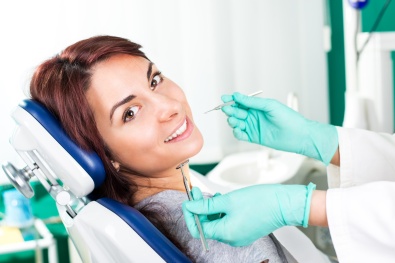Dr. Shweta Gupta is consultant implantologist
&
dentist in Ashok Vihar,
Model
Town, Shakti Nagar, Kanhaiya Nagar, Keshav Puram & Shalimar Bagh, having
the degree of B.D.S. She has also the certificate of P.G.D.H.H.M. She is having
certificate of MS in Implantology from U.C.L.A. from USA. She practices at her
clinic Delhi Dental Solutions which is one of the best
dental clinic in Ashok Vihar
with all ultra-modern equipment including OPG for full mouth x-ray.
As Dr. Gupta suggests, Dental
Implants have several Types and Classification
Implant Dentistry is a boon for
restoration of missing teeth for human beings. It overcomes several drawbacks
of other orthodox methods of restoring old teeth for example like with the help
of removable prosthesis and fixed prosthesis.
Basically, implantation can be
defined as the insertion of any object or material into the human gums which is
alloplastic in terms of its nature either partially or completely into the gums
for therapeutic, experimental, diagnostic or prosthetic purposes.
Mr. Per Ingvar Branemark is
hailed as the modern father of Implant Dentistry worldwide. His revolutionary
technique of implantation has several advantages like:
-It overcomes the drawback of any
removable prostheses which gives it durability
-Bone maintenance of height and
width is taken care of
-Implants are ideally aesthetic
tooth positioning which is an easy to carry out process for the patient
-It does not harm the
psychological health of the patients rather it improves the psychological
health of the patient.
-It very efficiently increases
the stability of the jaw in chewing various types of foods.
-It is also very helpful in
having increased and longer retention of the teeth.
-One important feature of an
implant is it completely works without the requirement of an adjacent teeth for
a support.
There are several types of Dental
Implants which are as follows:
1) Designed on the basis of the
design of the implant
2) Designed on the attachment
mechanism
3) Formed as macroscopic body
design
4) implants based on the surface
of the material and
5) based upon the type of the
material used
There are several classifications
done on the basis of the implant design as well which include designs like
Endosteal, Subperiosteal, Transosteal, Intramucosal, Root Form, Blade Form etc.
-Endosteal Implant
Includes one device which would be located in the alveolar bone and the basal
bone of the mandible or maxilla. One important factor is it transects only one
coprtical plate.
-Blade Implant, as it
suggested it consists of few thin plates in the formation of blades which are
embedded into the jaw bone.
-Root form implant- One of
the most common implants, it is designed to copy the shape of the teeth and it
is also used for directional load distribution
-Subperiosteal Implants
are directly placed under the periosteum overlying the bony cortex
-Transosteal implants are
also known as staple bone implant along with mandibular staple implant and
transmandibular implant. It combines the subperiosteal and endosteal components
plus it penetrates both of the cortical plates
-Intramucosal Implants are
inserted into the oral umcosa and the mucosa is used as an attachment site for
the metal inserts in the jaw.
There are classification of the implants based on the macroscopic
body design of the implant as well which are
a) Cylinder
b) Thread
c) Plateau
d) Perforated
e) Solid
f) Hollow or Solid
There are several types of implants done on the basis of
their surface as well; such as:
a) Smooth
b) Machined
c) Textured
d) Coated
There are numerous types of the
implant material nowadays which are available across markets such as:
1) Metallic Implants- Most
popular material in use today is Titanium in this category though other
metallic implants such as stainless steel, cobalt chromium molybdenum alloy and
vitallium are also used for such purposes.
2) Ceramic & Ceramic Coated
implants- These materials are often used to coat the metallic implants and such
ceramics could either be plasma sprayed or coated to produce bio active
surface. They are non-reactive ceramics materials are also available in the
current market.
3) Polymeric Implant- In the form
of polymethylmethacrylate & polytetrafluoroethylene and are used only in
the roles of adjuncts stress distribution along with implants rather than their
usage as implants itself.
4) Carbon Implants- These are
made up of carbon with stainless steel contents
Disadvantages of having implants:
- These are pricey affairs for a
common man
- It consumes good amount of time
in several sessions
- They cannot be recommended for
customers who do not have a history of quick recovery from health issues
- and last but not the least, it
also depends upon a person's body adaptation of the bone tissue in order to
have it successfully done on to them.
Dr. Shweta Gupta is an expert and
one of the best-known names in Delhi/NCR in dental treatments such as
Restorative (Dental Restorations, Crowns, Bridges), Prosthetic (Dentures),
Endodontic (Root Canal) therapy, periodontal (gum) therapy, and exodontias
(extraction of teeth),
Dental Implant in Ashok Vihar,
Tri Nagar, Shastri Nagar, Model Town & Shalimar Bagh.






